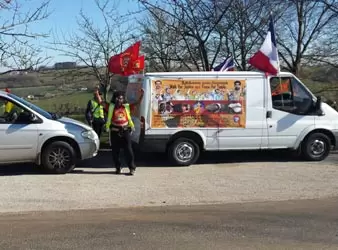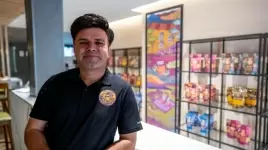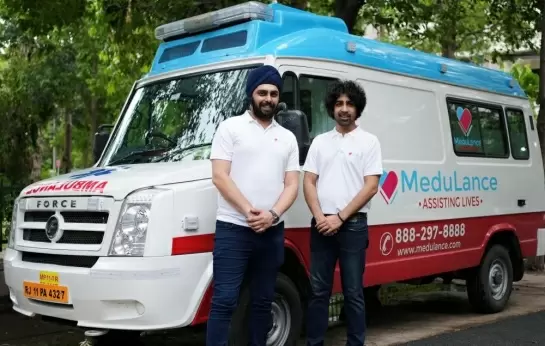Hundreds languish in illegal detention in Sri Lanka: Amnesty
13-March-2012
Vol 3 | Issue 10
Releasing its latest report on the terrible human rights situation in Sri Lanka, Amnesty International appealed to the UN to support the establishment of an independent international mechanism “to pursue accountability for alleged violations of international human rights and humanitarian law in Sri Lanka.”
Hundreds of people languish in arbitrary, illegal and often incommunicado detention in Sri Lanka, vulnerable to torture and extrajudicial execution, despite the end of the country’s long conflict, Amnesty International said in a new report.
 |
|
Channel 4 footage showing the cold-blooded execution of a suspected Tamil militant
|
The report noted: “The alleged violations that occurred in Sri Lanka in the context of its final armed conflict against the LTTE are so grave and of such a magnitude that they pose serious challenges to international justice and require not just domestic but international remedies as well, particularly given Sri Lanka’s long history of impunity.”
Sam Zarifi, Amnesty International’s Asia-Pacific Director said, “The security regime that was a hallmark of war continues after the LTTE’s defeat – little has changed. Authorities take advantage of laws allowing them to imprison people for months or years, with no need for prosecution in a court of law.”
“A lack of accountability for alleged war crimes gives the green light to Sri Lankan authorities to act with impunity. Meanwhile the message coming from the Sri Lankan government is that those who dare criticise it risk harassment, or even disappearance.”
The report noted that illegal detentions persist. Since 2011, 32 people have been “abducted” or subjected to enforced disappearances. “Many of these people are still missing.
“On 10 December 2011, two political activists organizing a demonstration by families demanding the release of Tamil detainees held without charge disappeared in Jaffna. Colleagues allege that they were abducted by the army and suspect they are held being incommunicado,” Amnesty stated.
|
A torture victim speaks to Amnesty International ‘They used blades to cut my hands and said they would cut my dick off’ |
|
Amnesty International interviewed “Shanthan” a foreign citizen of Sri Lankan Tamil descent in October 2011. Shanthan was born in Jaffna District near Point Pedro. He returned to Sri Lanka in February 2005 to volunteer at an orphanage after the tsunami.
He was recruited by the LTTE and trained to be a commander. He served as a fighter until he was injured in March 2009. “Shanthan” surrendered in May 2009. He was held in a number of camps and tortured in custody.
As he had aforeign passport his embassy finally pressured for him to be brought to Colombo. Shanthan faced charges of “training with weapons.” The embassy paid for a lawyer and he was freed on 6 April 2010 by the Colombo High Court.
On 11 April he left Sri Lanka accompanied by embassy staff: “On 18 May I was at Nandikadal Lagoon. There were many children there and old people…many people dead.
Some people died just because they couldn’t swim… to run away from firing they were trying to swim across. I surrendered with the civilians…”
“Shanthan” was first detained by military police from what he thinks were the 57th Division. He was interrogated, but bribed his way out:
“I was beaten with a baton. I was hit with wire cutters. The main purpose was interrogation. They wanted to know “Where is the LTTE leader. Who are the main leaders. Where have they escaped. What position did you have?…
When I got to Omanthai some people recognised me and said he is with the LTTE so I was… taken to an interrogation place.
It was a small building. I think four rooms. I was interviewed by military intelligence. They had pistols they liked to use. First they put a loaded pistol in my mouth ready to shoot. They also had small blades. They used those blades to cut at my hands. They also said they would cut my dick off.
I was held for a few days and asked the same kind of questions. After a few days I was sent to a school in Omanthai. I think 15 other Tiger fighters were there… It was an old school building.
There were about 3,000 people held there. There were lots of problems. We had to sit in lines. Then the military would start hitting us… They had red uniforms. I can’t tell you who was in charge they kept changing their supervisor.
In the school we used to be taken away by military intelligence after 10pm and taken to a kind of torture place. My hands were bound to a chair then I was hit in different places… sometimes with hands sometimes with a baton.
They were saying bad things. I was tortured every day for two weeks then after the ICRC visit they used to take me once a week. The torturers were often drunk I could smell it on their breath and I could smell ganja.
There were lots of people inside who faced similar threats. Actually these situations made us act alone. I had a very good friend in intelligence he was terribly injured by torture… he came back one day full of blood and was a different person.
We ignored him because we had to survive. Each of us just wanted to live in that moment. It was a very sad place. We had 60 people staying in one classroom. Just one food packet for three people… it was old food… we had no mats or beds just slept on a bare floor…
After a while I was sent to another camp, Vavuniya Maha Vidyalaya. In here there were about 600 cadres. It was known as a ‘rehabilitation camp’. It was a little better.
Here we could make our own food but we only had vegetables. Still there were problems with water and toilets.
We had five litres of water per person twice a week and that was for everything… for washing, toilet, cooking and drinking.
In the morning we would have a bath. Then we’d have to get in a line. The military wanted to check everyone.
We would get hit if anyone was missing. Then we would be forced by soldiers to go in the yard and raise the Sri Lanka flag and sing the song. Then we just sat in the classroom all day. We didn’t have any books or anything.
We still had some torture. We got asked questions about the LTTE. What was very bad was that at night when we were sleeping the soldiers came in and kicked people. After about four months I finally got a visit…
Finally some [embassy] officials visited me. They brought me a newspaper… I was still tortured with hitting but I was strictly ordered by the M.I [military intelligence] to say nothing [about the torture] or I would be killed.
[They] would have visited me earlier but GR [Gothabaya Rajapaksa, Sri Lankan Defence Minister] did not give the permission.
My mother also came… to visit me. Her time was restricted to 10 minute visits. She had been waiting round the school to visit me.
I was so happy to see her after such a long time. I hadn’t seen her for so long. She didn’t know if I was alive or dead. I had to shield her from the truth of what was happening to me. I am the oldest son and she is already weak so I couldn’t burden her with these bad things.”
On 17 March 2010 Shanthan was transferred to CID custody and the notorious 4th Floor:
“This move to Colombo this was the worst… this was the worst… this was total torture… there they had an electric chair… I can’t think about it… you know they have some sayings… the 2nd floor that is inquiry… 4th floor hard inquiry with torture… if you go to 6th floor torture… you don’t come back.
I was here for a few days luckily then the… embassy came. The government had not informed the embassy that I had been transferred to Colombo. I only got a few minutes with them.
The embassy came to know I was there as I passed a message through other Tamil visitors to the place.
The embassy paid for a lawyer. I had a Court case. It just lasted two days. On 6 April I was freed by the Colombo High Court.”
Shanthan left the country four days later.
|
Also Read
US keeps Sri Lankan rights issue alive














